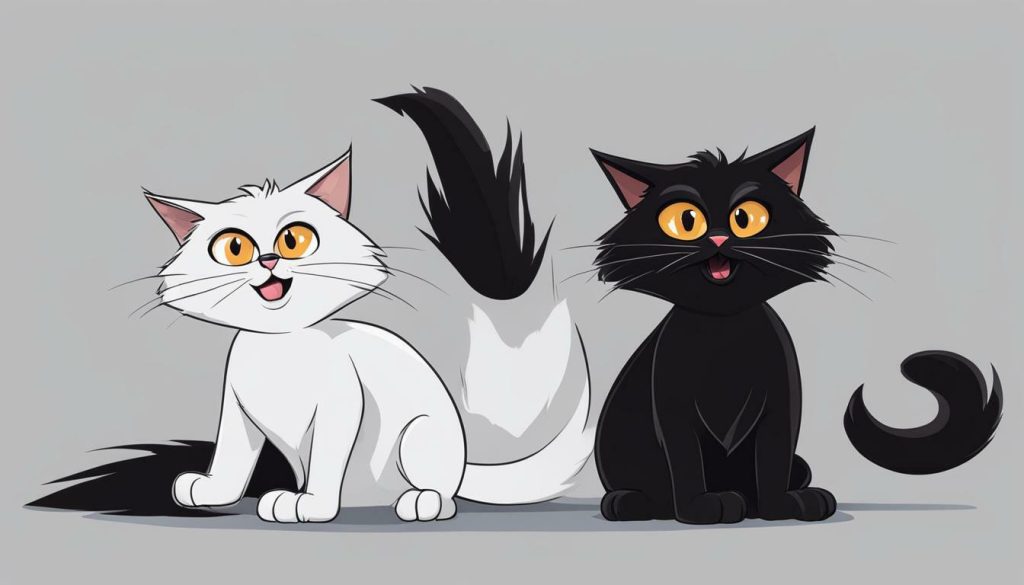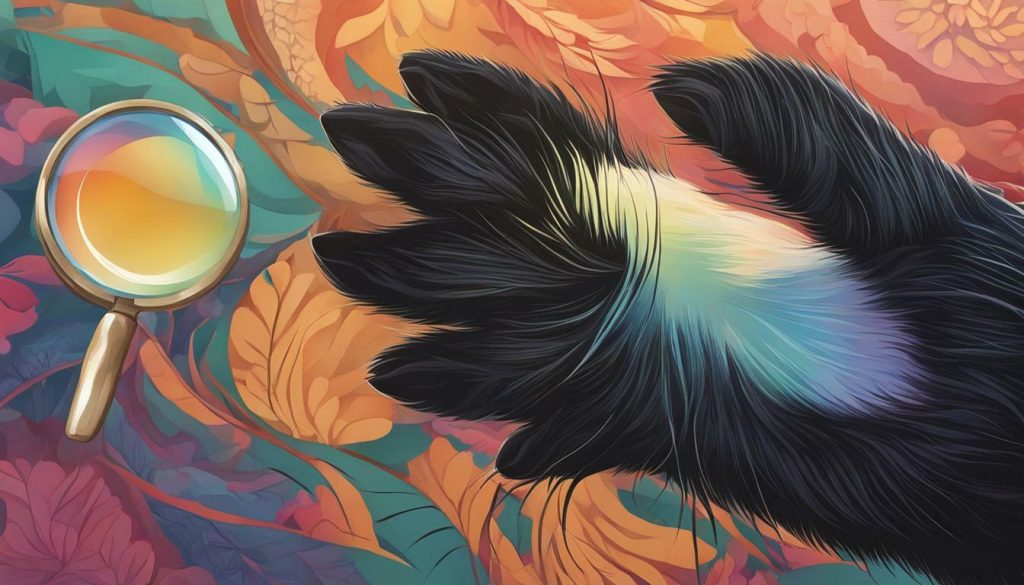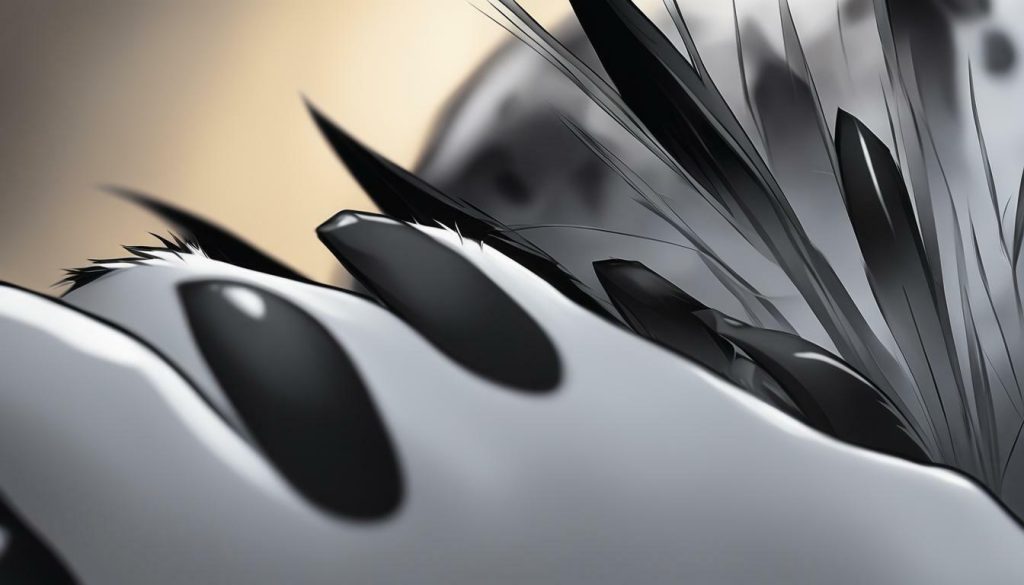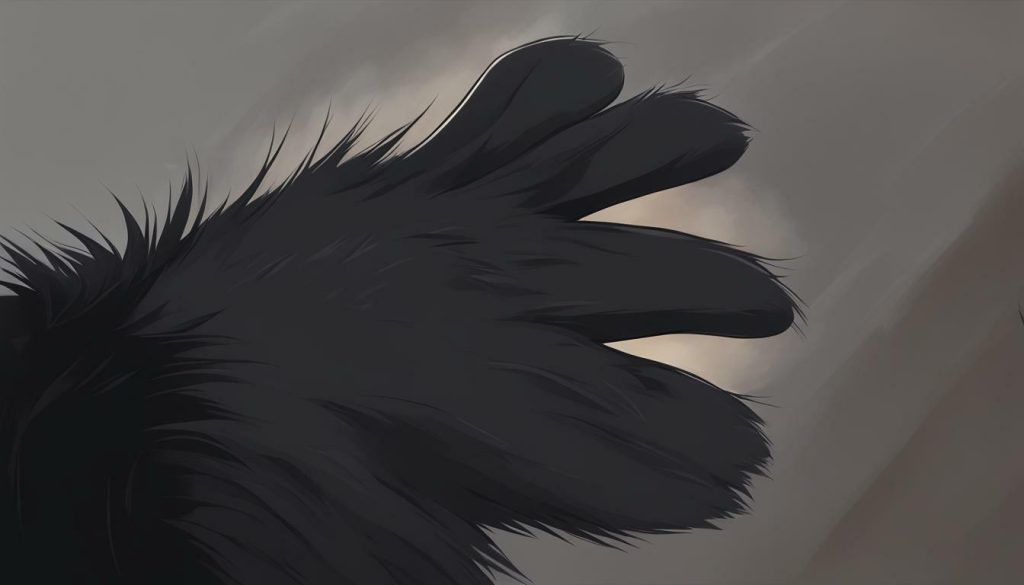As a cat owner, you may have noticed that your feline friend’s claws sometimes appear black. While this can be a normal occurrence, it’s important to understand why cat claws turn black to ensure your cat’s overall health and well-being. In this section, we will explore the reasons behind black cat claws and what they could mean for your furry companion.
- 1 Key Takeaways:
- 2 The Normal Color Range of Cat Claws
- 3 Melanin and Cat Claw Pigmentation
- 4 Genetic and Breed Factors
- 5 Age and Nail Growth
- 6 Health Conditions and Claw Discoloration
- 7 Conclusion
-
8
FAQ
- 8.1 Q: Why are my cat’s claws black?
- 8.2 Q: What is the normal color range of cat claws?
- 8.3 Q: Are there genetic factors that contribute to black cat claws?
- 8.4 Q: Can a cat’s age affect the color of their claws?
- 8.5 Q: Can black claws in cats be a sign of a health issue?
- 8.6 Q: How should I monitor my cat’s claw color and overall health?
Key Takeaways:
- Black claws in cats can be normal, but it’s important to monitor any changes.
- The color of cat claws is primarily influenced by the presence of the pigment melanin.
- Certain cat breeds may be more prone to having black claws due to genetic factors.
- Cats’ nails may naturally grow darker with age.
- Black claws may also be indicative of underlying health conditions.
The Normal Color Range of Cat Claws
Before we dive into the reasons for black cat claws, let’s establish what is considered normal. Most cats have claws that range in color from translucent to various shades of white, beige, or gray.
However, it’s not uncommon for some cats to have claws that appear black. This can be due to a variety of reasons, some of which we will explore in the following sections.
If you notice any significant changes in the color or texture of your cat’s claws, it’s always best to consult with your veterinarian. They can help determine if there is an underlying health concern or if your cat’s claw discoloration is entirely normal.
While blackening of cat claws can be concerning, it’s important to note that it’s not always a cause for alarm. Sometimes, it’s just a natural variation in pigmentation.
To better understand the reasons behind black cat claws, let’s explore the role that melanin plays in cat claw pigmentation.
Melanin and Cat Claw Pigmentation
Have you ever wondered why your cat’s claws may appear black? The answer lies in a pigment called melanin, which is responsible for the coloration of various body parts, including the fur, skin, and claws. The more melanin present, the darker the color will be, which is ultimately the reason behind the black color seen in some cat claws.
Melanin production in cat claws is influenced by a variety of factors, including genetics, age, and health. In some cases, an increase in melanin production can be a natural result of age and nail growth. However, discoloration in cat claws can also be caused by external factors such as dirt or debris.
While black claws in cats can be a normal occurrence, they can also be a sign of an underlying health issue. Certain medical conditions, such as fungal infections or autoimmune disorders, can cause changes in claw color. If you notice any other concerning symptoms alongside black claws, it’s important to consult your veterinarian.
Overall, the reason behind black cat claws is due to the presence of melanin. This pigment can be influenced by various factors, including genetics, age, and health. It’s important to keep an eye on changes in your cat’s claw color and seek veterinary advice if you notice any concerning symptoms. By doing so, you can ensure that your cat stays happy and healthy for years to come.
Genetic and Breed Factors
As mentioned earlier, some cats are more likely to have black claws than others. While melanin is the primary determinant of claw color, genetics also play a significant role. Certain breeds, such as the Bombay or Scottish Fold, are known for having black claws as a characteristic trait. These breeds may have specific genes that influence the production and distribution of melanin in their claws.
It’s also important to consider individual genetic factors. Even within a breed, some cats may have darker claws than others due to inherited traits. If you’re wondering why your cat’s claws are dark, it’s possible that they inherited genes for higher levels of melanin production.
It’s worth noting that while black claws can be a normal variation among cats, it’s always a good idea to monitor your cat’s overall health. If your cat has any other concerning symptoms alongside dark claws, it’s essential to consult your veterinarian. Certain medical conditions, such as fungal infections or autoimmune disorders, can also cause claw discoloration.
While the black color in cat claws can be intriguing, it’s essential to remember that your cat’s health and well-being should always come first. By understanding the various factors that can influence claw color, you can better monitor your cat’s health and notice any changes that may warrant veterinary attention.
Age and Nail Growth
As I mentioned earlier, one of the normal reasons for black cat claws is simply due to age. As cats get older, their nails may naturally grow darker due to the accumulation of melanin. This is completely normal and nothing to worry about.
It’s important to note that not all cats will experience this change in nail color with age. Some may maintain their original color throughout their lives.
In addition to age, external factors such as dirt or debris can also cause discoloration in cat claws. If your cat spends a lot of time outdoors or in dirty environments, their nails may turn black due to exposure to these substances. Regular grooming and cleaning can help prevent this.
However, if you notice sudden or drastic changes in your cat’s nail color, it’s important to consult with your veterinarian. While black claws can be normal, they can also be a sign of an underlying health condition such as a fungal infection or autoimmune disorder. Keeping a close eye on your cat’s nail color and overall health can help catch any potential issues early on.
Health Conditions and Claw Discoloration
If you notice your cat’s claws turning black, it’s essential to consider if this could be a sign of an underlying health condition. Certain medical conditions can cause discoloration in the claws, including fungal infections, autoimmune disorders, and even cancer.
In some cases, blackening of cat claws can also be the result of trauma or injury. If your cat has experienced an injury to their nail bed or surrounding area, it’s possible for the claw to become discolored as it heals.
It’s crucial to monitor any changes in your cat’s claw color, especially if they are accompanied by other symptoms such as lameness, swelling, or discharge. If you notice any concerning symptoms, it’s important to consult your veterinarian for a proper diagnosis and treatment plan.
Remember, prevention is always better than cure. Keep your cat’s claws clean and well-groomed to reduce the risk of infection or injury. Regular visits to the veterinarian can also help catch any health issues early on, potentially preventing more serious complications down the road.
Conclusion
While black claws in cats may seem mysterious and concerning, they can actually be perfectly normal and harmless. However, it’s still essential to keep an eye on your cat’s overall health and any changes in their claw color.
If you notice any other concerning symptoms, such as limping or pain, alongside black claws, it’s important to consult your veterinarian. Certain medical conditions, such as infections or autoimmune disorders, can cause claw discoloration and require treatment.
Remember, a happy and healthy cat is always worth the extra attention. So next time you ask yourself “why are my cat’s claws black?”, rest assured that it’s not always a cause for concern.
By staying informed and proactive about your cat’s health, you can ensure that they continue to live their best lives with their cute little black claws intact.
FAQ
Q: Why are my cat’s claws black?
A: The color of a cat’s claws can vary, and black claws can be normal for some cats. The primary factor influencing the color of a cat’s claws is the presence of a pigment called melanin. Higher levels of melanin result in darker colors, such as black.
Q: What is the normal color range of cat claws?
A: Most cats have claws that range in color from translucent to various shades of white, beige, or gray. However, it’s not uncommon for some cats to have claws that appear black.
Q: Are there genetic factors that contribute to black cat claws?
A: Yes, certain cat breeds are more prone to having black claws. Genetic factors can influence the production and distribution of melanin in cat claws, leading to darker colors. Breeds like the Bombay or Scottish Fold often have black claws as a characteristic trait.
Q: Can a cat’s age affect the color of their claws?
A: Yes, as cats age, their nails may naturally grow darker. Older claws have had more time to accumulate pigments, resulting in a darker color. It’s also possible for cats to develop discoloration in their claws due to external factors such as dirt or debris.
Q: Can black claws in cats be a sign of a health issue?
A: In some cases, black claws in cats may be a sign of an underlying health issue. Certain medical conditions, such as fungal infections or autoimmune disorders, can cause changes in claw color. If you notice any other concerning symptoms alongside black claws, it’s important to consult your veterinarian.
Q: How should I monitor my cat’s claw color and overall health?
A: It’s important to regularly examine your cat’s claws for any changes in color or appearance. If you have any concerns or notice any unusual symptoms, don’t hesitate to seek veterinary advice. Remember, a happy and healthy cat is always worth the extra attention.














